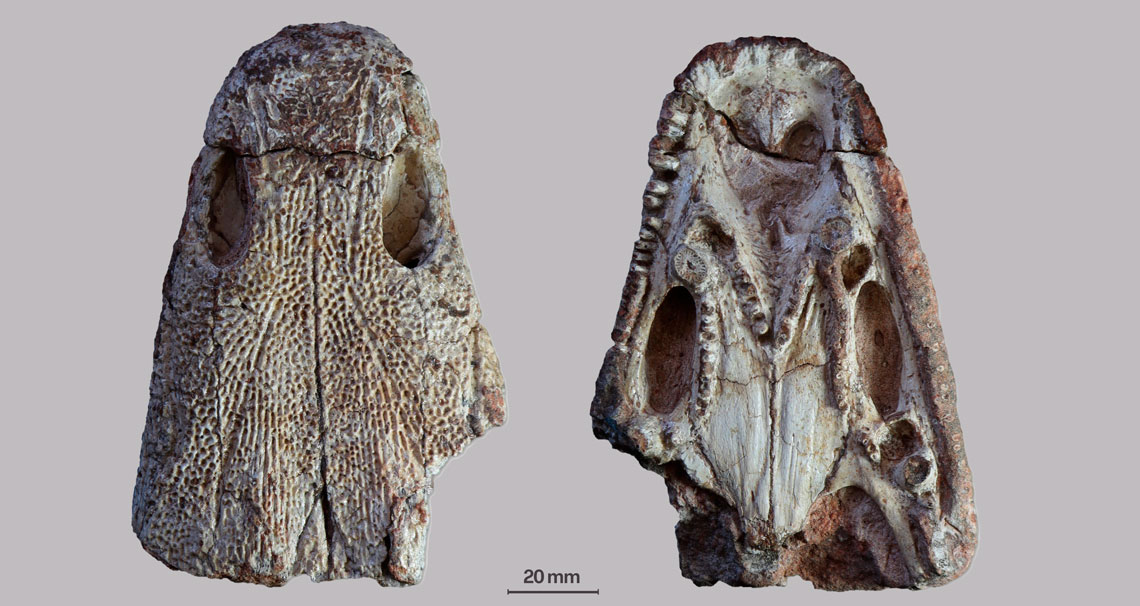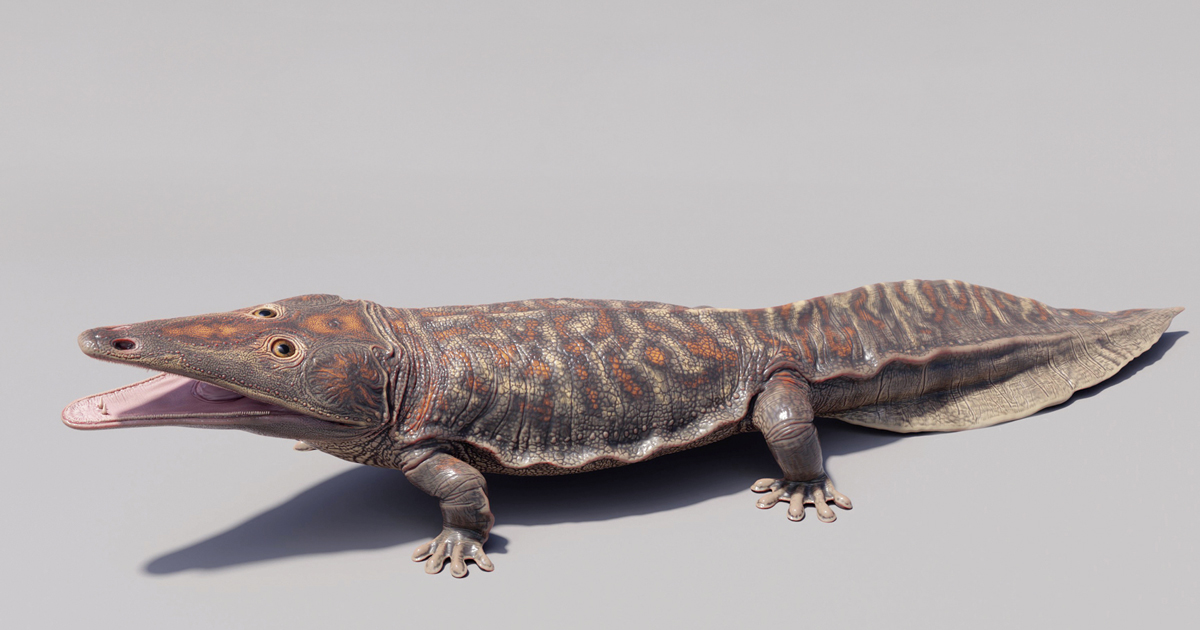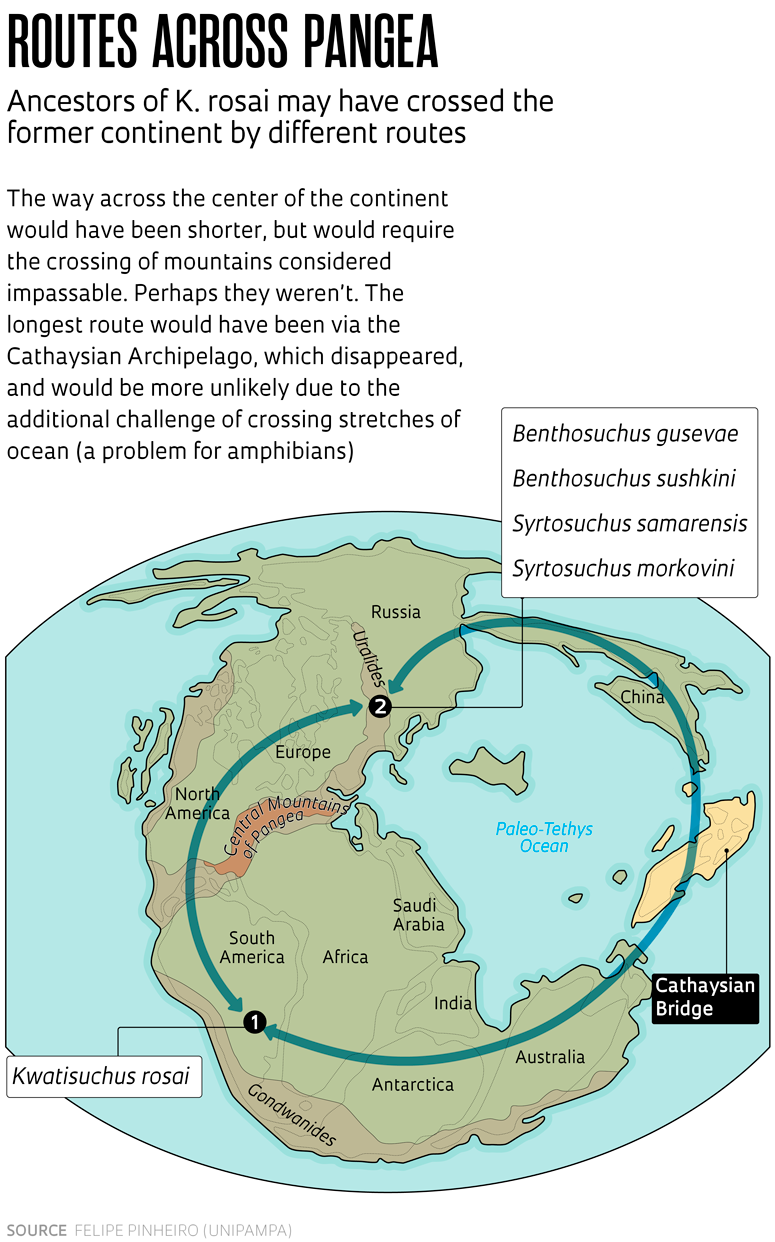Paleontologists found the fossil of an amphibian that lived some 250 million years ago, before dinosaurs existed. Named Kwatisuchus rosai, the animal, about 1.5 meters long, was related to species already on record in Russia. This discovery confirms suspicions that animals in that age occupied Pangea, the earth mass that then united the current continents.
“It was a predator that lived for most of its time in rivers and lakes,” says paleontologist Felipe Pinheiro, of the Federal University of Pampa (UNIPAMPA), in the southern Brazilian state of Rio Grande do Sul. His workplace at the São Gabriel campus is one hour from the excavation site: a farm in the town of Rosário do Sul, in the west of the state. The animal, described in January in scientific journal The Anatomical Record, was identified based on fossilized snout bones, uncovered in 2022.
K. rosai was part of a group of amphibians known as temnospondiles, shallow-water predators with long snouts similar to those of crocodiles, adapted for capturing fish—for this reason they were confused with reptiles. “Among the anatomical features that suggest kinship with current amphibians, some temnospondiles present evidence of a larval stage, similar to tadpoles,” explains Pinheiro.
This group survived the planet’s biggest extinction event at the end of the Permian period (299 million to 252 million years ago), when around 90% of marine species and 70% of land-based wildlife disappeared. In a devastated world where large animals were eliminated, this amphibian was one of the most sizeable.
“These types of small, strong, and little-diversified animals recolonized the planet,” observes Salvadoran paleontologist Juan Carlos Cisneros, of the Federal University of Piauí (UFPI), who did not take part in the study. Among them were the cynodonts, ancestors of the mammals, and the archosaurs, reptiles from which the dinosaurs, crocodiles, and birds evolved. “All were less than 1 meter long.”

Alice Dias Fossilized snout bones enabled description of the speciesAlice Dias
He goes on to say that K. rosai also hunted on land, carrying the advantage of having a varied diet, and probably the ability to build mucus-lined dens where it protected itself during the dry season. Cisneros states that all the animals of the period dug tunnels to protect themselves, and burrows with the skeletons of other similar amphibians have been found in South Africa.
Temnospondiles became dominant during the Triassic period (252 million to 201 million years ago), but were replaced by the crocodiles, which occupied the same environment but were larger, laying shelled eggs. Consequently, they were drought-resistant, while the amphibians depended on water to reproduce.
The name Kwatisuchus comes from the Indigenous language Tupi word kwati, which means long snout, and the Greek suchus, for crocodile. The additional word rosai is a nod to paleontologist Átila Stock Da-Rosa, of the Federal University of Santa Maria, who helped to locate, preserve, and study the formation housing the fossil site, known as Sanga do Cabral. This is the only location in Brazil with records of the period that followed the Permian-Triassic extinction.
“The UNIPAMPA team is uncovering important and little-known wildlife in Brazil,” says palaeontologist Max Langer, of the University of São Paulo’s Ribeirão Preto campus, who did not participate in the study. He states that many fossils from this period have been found in countries such as China, Australia, Russia, and South Africa. “The connection with wildlife in the current Russia is evident at sites across Brazil’s Paraná, Rio Grande do Sul, and Maranhão States.”

